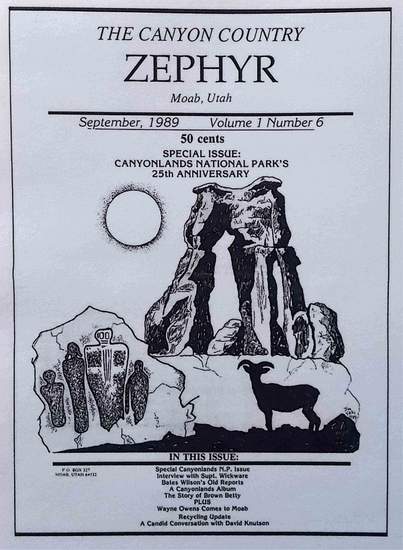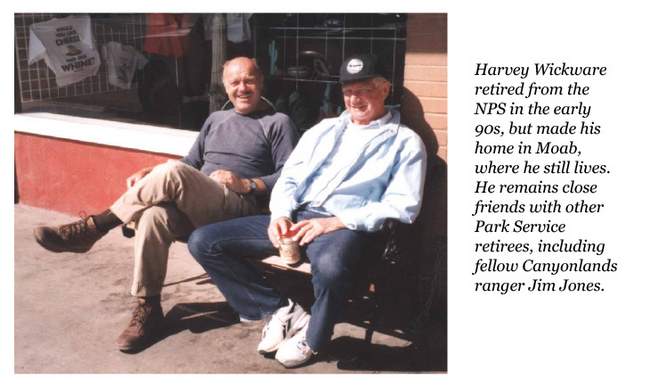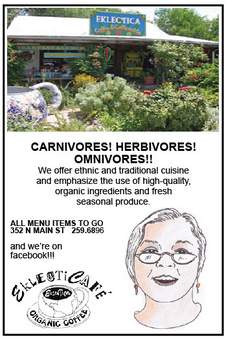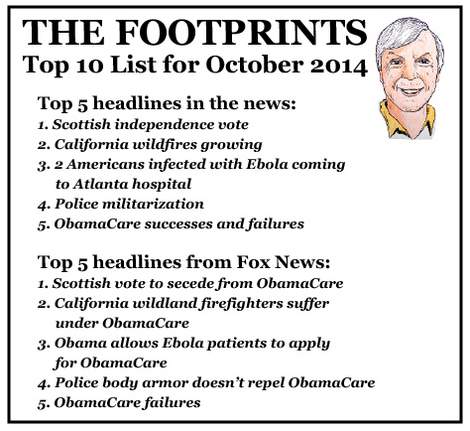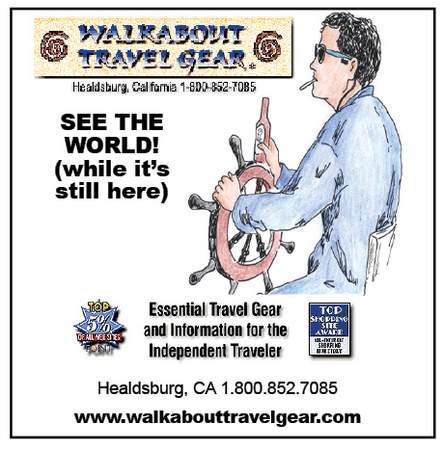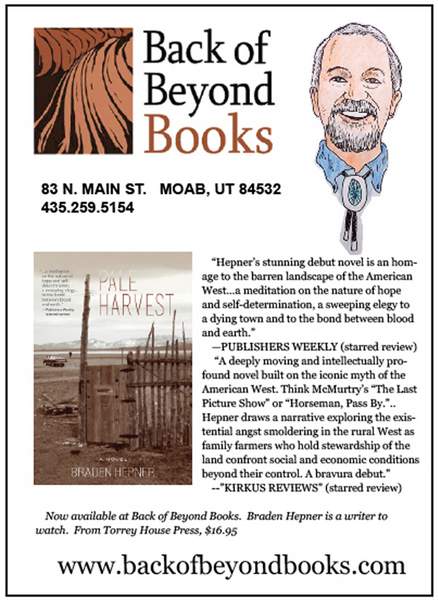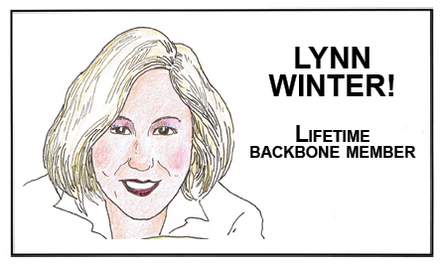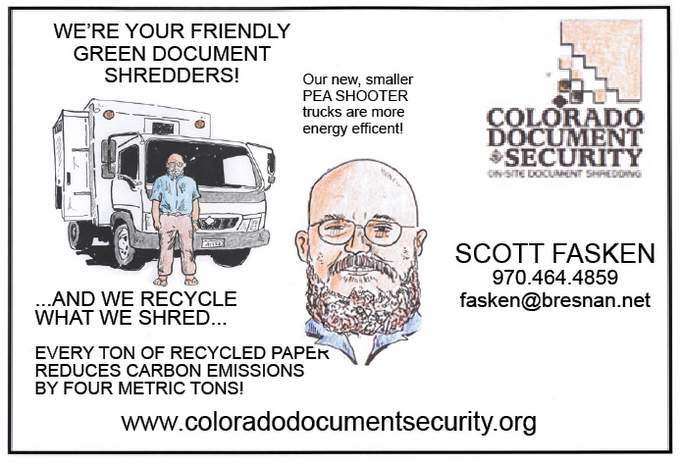In The Zephyr’s first year of publication, Canyonlands National Park celebrated its 25th anniversary. I interviewed then-Superintendent Harvey Wickware, who gave his assessment of Canyonlands National Park’s first quarter century, and offered his vision of the Park at 50…Last month Canyonlands NP reached that 50th anniversary. Here is our interview with Harvey and his predictions for the park’s future. Harvey and his wife June still live in Moab…JS
Zephyr: Harvey, in looking at its first 25 years as a Park, how would you assess the Park Service’s performance, both in protecting the resources, and providing for public use?
Wickware: I think the first 25 years have definitely been on the side of protection; while that is good, it has some ramifications that I think are bad. To err on the side of protection, I think we have failed to provide services for visitors. I don’t think the park was set aside to protect and not accommodate reasonable numbers of visitors, with the visitation to Canyonlands to date. I don’t think that the timidity we’ve had, not just the National Park Service, but the State and community and all interested groups have done justice to the visitor. I think the first 25 years have been marked by an overemphasis on not doing things in the park the way they should be done in a park as far as development’s concerned.
Zephyr: Is there anything in particular that you would have supported as far as development goes that was rejected in the past?
Wickware: I think that the General Management Plan (GMP) which is a very modest plan, has a lot of things in it that need to be done, and I certainly wouldn’t advocate going outside the scope of that, because that’s the tool. That’s there to follow. What hasn’t happened is we haven’t had a joint or single-minded effort on the part of the Park Service to accomplish the things that are in the GMP, to the point where trailer house offices that were put in years ago as Interior facilities, exist today. The things that I’ve been talking about that we need to do is to bring Canyonlands from its infancy to its young adulthood. By that I mean, replace existing facilities and services with modern ones. Some of that has been going on at Island In the Sky. Very little has happened at needles, and that’s what we’re working on now—trying to get funding for the Needles. We need good sanitary facilities down there, for example. Sewer systems, electrical systems and housing and maintenance facilities—these will enable us to serve the visitor well, and do less resource damage than doing things hodge-podge like we’ve been doing. Ticky-tack stuff. When we have employees and visitors using ticky-tack facilities, they think of us as a ticky-tack park. We need nice, neat, clean facilities that accommodate the needs that we have to housing, maintenance and visitor services, done in a quality way. Maybe we can’t accommodate more visitors, but we can assure they have a quality experience.
 Zephyr: You’ve mostly talking about improving facilities, but from the beginning many people locally have felt that the Park Service should be committed to a much more vast network of paved roads. How do you feel about that?
Zephyr: You’ve mostly talking about improving facilities, but from the beginning many people locally have felt that the Park Service should be committed to a much more vast network of paved roads. How do you feel about that?
Wickware: How I feel about it personally is different from working within the constraints that we have. Given a free hand, I guess I would do things a little differently. Jumping into the future, I don’t think the GMP is a thought-out plan—it’s a series of compromises, because of the extreme controversy that has existed here. It’s probably leveled off to some degree, just because people are getting tired of fighting. Specially regarding roads, I certainly don’t advocate paving any more roads than is called for in the GMP. I can only think of one that isn’t paved and should be—that’s the Colorado River Overlook in Needles District. Quite frankly, I think that’s needed, because the front country visitor experience in the Needles is very limited, which does not serve Blanding and Monticello very well as far as overnight visitors after a nice day experience at the Needles. That would give them a similar overview as they have at Island In the Sky and get out to a nice viewpoint.
Zephyr: In the late 70s, when the GMP was being formulated, a major point of contention was the Park Service’s refusal to build a bridge over Big Spring Canyon to the Confluence, which could eventually allow a road to continue South, all the way to Natural Bridges. Is that issue dead, or can it be revived?
Wickware: It’s totally dead in the existing GMP, and I’m told the GMP is static. What I’ve told advocates of that effort is this: There’s between 15 and 20 million dollars of agreed upon efforts that can be done in the Park without going outside the existing GMP. Before we can even think about re-opening the GMP process, there are a lot of things that are called for such as the package in the Needles. At some time, the GMP will be re-opened. It has to be. Whether at that time the National Park Service, the Conservation and Pro-development groups, the In-betweens, can come to an accommodation where some additional roads will be built, I don’t know. I certainly don’t advocate it. I personally believe from a professional standpoint that it would be a mistake to build a network of major highways in the Needles District, or elsewhere in the Park. However, in my mind the Needles and other districts are interlaced with what I think are devastating four-wheel roads. In many ways, to exchange some of these hundreds of 4WD routes, in favor of some additional front country access that just goes into the periphery of the Park, spur roads in the Needles for example, would whet their appetites for more of the Park.Nor I’m not proposing that; it’s outside the GMP. Buy my mind isn’t necessarily shut off because of the GMP. I’m not about to start campaigning for something like that. I think that in the future, there will be some discussions, and that some of these 4WD roads are an abomination to the Park. I think we can as a result improve backcountry conditions.
Zephyr: Talking about the backcountry, I recently saw some statistics that backpacking is in general declining in the National Parks. The one exception is Canyonlands, which has shown a 50% increase since 1983. What are the problems associated with backcountry use and how will they be dealt with in the future?
Wickware: I think that parts of the Needles, and the Maze, and even parts of the Island will always be heralded as “a great part of the Colorado Plateau to see on foot.” I think eventually we’re going to end up with a reservation system, ultimately a computerized system where you can call in from Cleveland and have certain dates at certain campsites. Quite frankly, some of our sites are not being hammered pretty hard. And people are getting disgusted—they do indeed drive from Cleveland and then find everything full, so they end up in Bureau lands. I can see that in the future, even backcountry campers will have to camp in designated spots, because ultimately it has an impact.
 Zephyr: At this time, the Congress has not officially designated wilderness areas within Canyonlands. Two questions. First: if some of these Jeep roads were closed, would that enlarge the wilderness areas? Secondly, would designating wilderness put to rest once and for all, any plan to build the Confluence Road or will a corridor be provided for that possibility?
Zephyr: At this time, the Congress has not officially designated wilderness areas within Canyonlands. Two questions. First: if some of these Jeep roads were closed, would that enlarge the wilderness areas? Secondly, would designating wilderness put to rest once and for all, any plan to build the Confluence Road or will a corridor be provided for that possibility?
Wickware: I’m sure you recall that wilderness studies were done in Canyonlands, and Congress hasn’t acted on it. But the National Park Service is mandated to manage those proposed areas as wilderness now even though they don’t have the formal designation. And as I recall, I was looking at the Wilderness Plan the other day. That road corridor is not provided for in the Wilderness proposal.
Zephyr: From your perspective and the trends you’ve observed in the Parks over the years, I’d like you to envision in your mind what you think Canyonlands will be like in another 25 years.
Wickware: First, I would deal with the GMP. I think certainly within the next 25 years there will be a new look at it. It is indeed crystal-balling to attempt to prophesy how that might change, but I think there will be changes. I personally don’t think they will be dramatic. I think there will be a need for a bigger visitor center at the Island; I’ll deal with that district first. A large staff will be called for because we’ll be serving larger numbers of people. There’s a great potential to at least double the use, not by our conscious efforts but just by peoples’ growing awareness of the Park. I don’t see any expansion of roads; I see infrastructure improving.
Zephyr: What about the campground?
Wickware: That’s a tough one. I think we have 12 sites there now, and the GMP calls for 8. I personally would rather see a manageable campground, and maybe you could pave that road. But that is complicated by concerns from the private sector. More realistically, there is some potential for putting a government campground adjacent to the Park, perhaps an Inter-agency campground. I think that’s a potential that will be explored.We’ve talked about, and I’m a little afraid to do it, but we’ve proposed building large entrance signs, 15 by 30 feet, at the entrance to both the Island and the Needles. We’ve already approached the State with a proposal to accommodate both Dead Horse Point and Canyonlands with one sign. That alone could double visitation, and we’re almost afraid to do it because we don’t have the staff to handle it.I think the Needles will continue to be the Intermediate experience. I think, 25 years from now, the proposals to have a more complete system of visitor services will be complete. The visitor use will increase and the backcountry use will increase. Some of the trails will be high grade. In 25 years, I think the Colorado River Overlook Road will be paved. I believe there will be discussions and compromises on 4WD use versus frontcountry use. I don’t see any further increase by roads into the backcountry.At the Maze, 25 years from now, I see the potential for either the County or the State and an effort to acquire some federal funding, improving access to the vicinity of Hans Flat. By the end of its 50th year, I think total visitation to the Park will be approaching a million visitors a year. And as use increases at the Island and at the Needles, there’s going to be more of a push to use the most remote part of the Park, and that’s the Maze. I think most certainly it’ll be graveled and maybe a paved road.
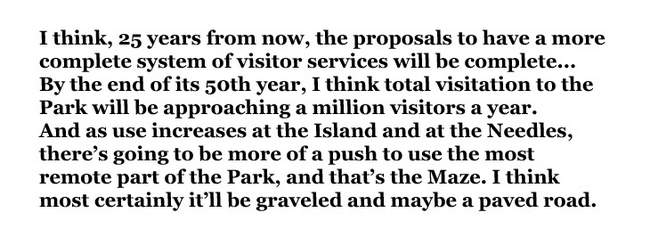
Zephyr: In connection with that, there is some speculation that tar sands development in the Orange Cliffs could affect the Park. Some have proposed expanding the Park boundary to preclude that threat. Do you see Park expansion in the future?
Wickware: Most certainly, there will be numerous proposals to expand the Park. I think there’s significant potential for at least the Orange Cliffs being added. I think there’s less potential for the rim to rim concept.
Zephyr: Any final thoughts?
Wickware: I’m tickled to death to be here during the 25th Anniversary. It’s a delightful spot in this country. I certainly would say that my interest as a player in the National Park Service team is not in any destructive things for Canyonlands, but to provide the opportunity for as many visitors as is possible within acceptable impact limits. I think that’s the challenge—to serve lots more people without much greater impact than we have right now through wise utilization of modern conveniences. With those conveniences, I think we can lessen the total impact on the Park.If we lose the support of the American public, regardless of how high our ethics are, we’re dead. Not just as a Park, but as a Park Service. If we indeed become known as the agency that gets land and locks it up, if we are viewed by the public as a chain link organization, we’re in big trouble.
Zephyr: Don’t you think that more and more Americans view Parks and wilderness as almost a savings account—putting aside what’s left? That it’s not a selfish act. It’s a very noble one.
Wickware: I agree with that. It is a very noble thing to do. I think we may be failing to get a significant portion of the public to follow that, and that’s one of our challenges. I like to have idealists on my staff because they present new ideas, and I like that. But the National Park Service needs to balance that, and I don’t mean a compromise necessarily. I think if we are purely idealistic, without the public seeing the need, then we lose their support. There are some who say that being idealistic is what our mission in the National Park Service should be, and I think that’s pretty puffery of us to feel that way. We’re managing the peoples’ Parks for them.
To read the PDF version of this article, click here.
To comment, scroll to the bottom of the page.
Don’t forget the Zephyr ads! All links are hot!

